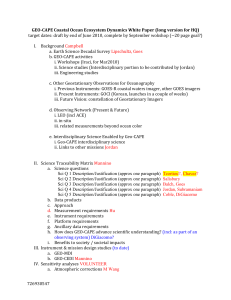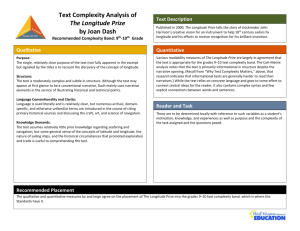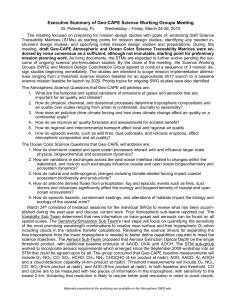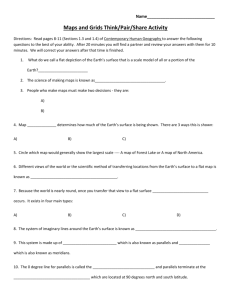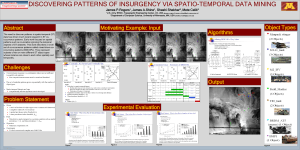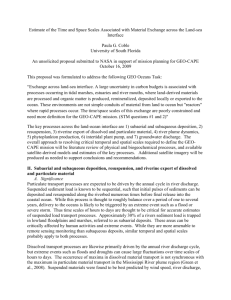Optimizing Longitude Location for the Geo
advertisement
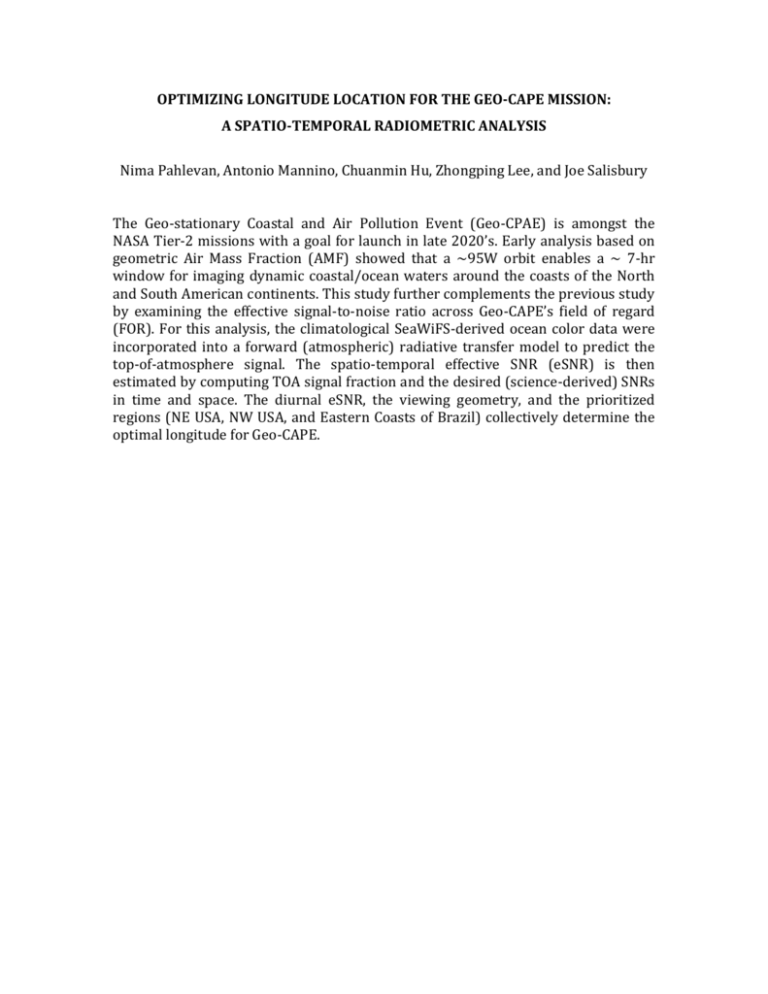
OPTIMIZING LONGITUDE LOCATION FOR THE GEO-CAPE MISSION: A SPATIO-TEMPORAL RADIOMETRIC ANALYSIS Nima Pahlevan, Antonio Mannino, Chuanmin Hu, Zhongping Lee, and Joe Salisbury The Geo-stationary Coastal and Air Pollution Event (Geo-CPAE) is amongst the NASA Tier-2 missions with a goal for launch in late 2020’s. Early analysis based on geometric Air Mass Fraction (AMF) showed that a ~95W orbit enables a ~ 7-hr window for imaging dynamic coastal/ocean waters around the coasts of the North and South American continents. This study further complements the previous study by examining the effective signal-to-noise ratio across Geo-CAPE’s field of regard (FOR). For this analysis, the climatological SeaWiFS-derived ocean color data were incorporated into a forward (atmospheric) radiative transfer model to predict the top-of-atmosphere signal. The spatio-temporal effective SNR (eSNR) is then estimated by computing TOA signal fraction and the desired (science-derived) SNRs in time and space. The diurnal eSNR, the viewing geometry, and the prioritized regions (NE USA, NW USA, and Eastern Coasts of Brazil) collectively determine the optimal longitude for Geo-CAPE.
